Bryophyta: Non- vascular plants
It includes all land plants that do not have true vascular tissue, and are hence called non- vascular plants. They do not have leaves, cones, flowers or roots. But they have rhizoids, which help them to adhere to a substratum. Bryophytes are commonly known as amphibians of the plant kingdom, because they can live in soil, but require water for sexual reproduction. Mosses and liverworts are the sole members of this group.
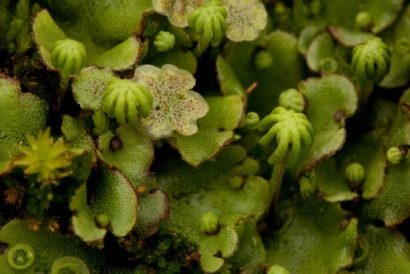
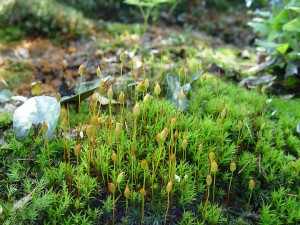
Liverwort Moss
Habitat
Since vascular tissue is absent, the only way through which nutrients enter the body is through osmosis and diffusion. The plants are very short and are found in damp, humid and shaded habitats. They play an important role in succession on bare rocks or soil.
Morphology
Bryophytes have a moderately differentiated plant body. It composed of a thallus– like structure attached to the substratum by means of a rhizoid. They do not have true leaf, stem or roots, but possess root-like, leaf-like or stem-like structures.
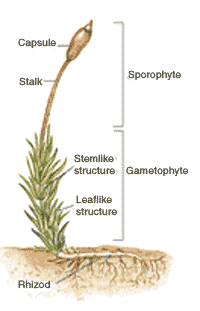
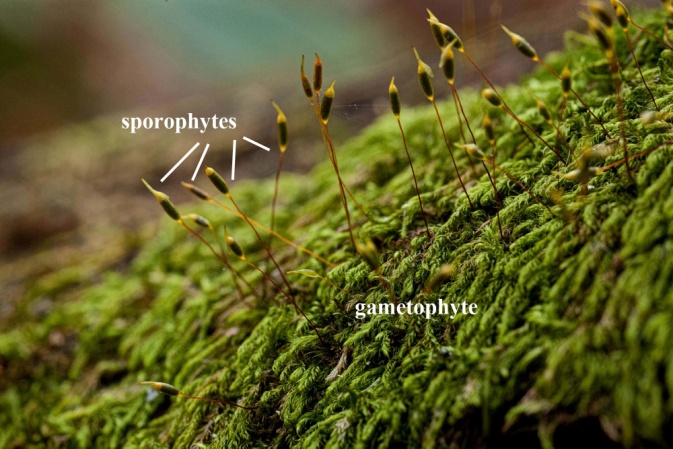
Reproduction
In Bryophtes, gametophyte stage (haploid) is the dominant phase. It is the more prominent and the longer lived plant. The sporophyte stage (diploid) appears only for a short period and remains attached to the gametophyte.
Vegetative Reproduction: When a piece of gametophyte breaks off and lands on a suitable habitat, it will grow into a new gametophyte.
Sexual Reproduction: It involves an alternation of generations between the gametophte and sporophyte organisms. The gametophyte produces the gametes and the sporophyte produces haploid sperms.
Gametophyte bears multicellular sex organs. The male sex organ is a tiny, stalked, club – shaped structure called antheridium. It produces numerous biflagellate sperms known as antherozoids. The female sex organ is called archegonium. It is flask- shaped and produces a single egg. The antherozoids are released into the water. They swim through the water to the archegonium and fuses with the egg to form zygote.
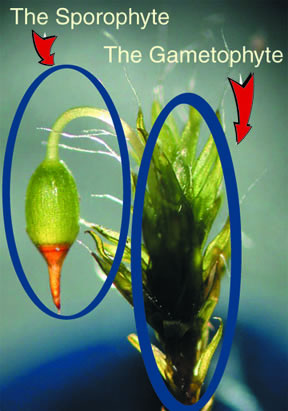
The zygote develops into a multicellular sporophyte. It remains attached to the gametophyte and absorbs nutrients from it. The sporophye undergoes reduction division to produce haploid spores. The spores are borne on stalked or stalkless capsules called sporangium. These spores germinate to produce gametophyte.
Economic importance
- As food: Some mosses are consumed by herbaceous mammals, birds and other animals.
- Peat: Sphagnum (a moss) provides peat, which is used as a fuel as well as a packing material for transporting live materials (due to its water holding capacity).
- Succession: Mosses and lichens are capable of colonizing on rocks, and helps in soil formation by decomposing the rocks. It then serves as a suitable substrate for higher plants.
- Soil erosion: Mosses and ferns grow as dense mats on soil. Hence, they reduce the impact of rain on soil and thus reduce soil erosion.